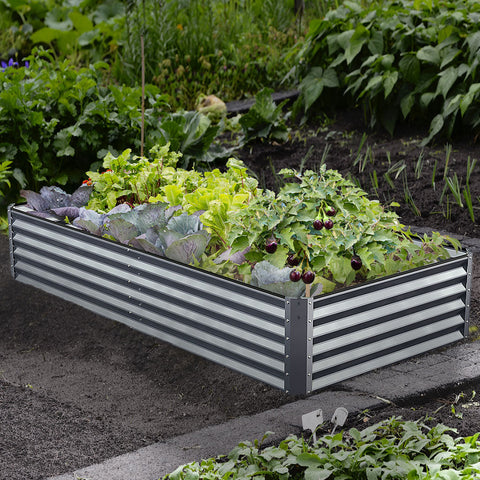Rosemary is an evergreen shrub, a robust herbaceous plant that is perfect for your garden. As long as there is sufficient sunlight, rosemary can grow equally well on the ground or in container gardens.The following content also has some reference value for raised garden beds.
In addition, this Mediterranean herbaceous plant is not particularly particular about soil, as long as it is well drained soil. It is easy to maintain and harvest. Therefore, even novice gardeners should learn how to harvest rosemary, because anyone can keep it growing!
Whether you are using it fresh or storing it for future cooking, it will add a wonderful aroma and unique flavor to any recipe.
When should I harvest rosemary?
Rosemary plants are cold resistant and can harvest abundantly in almost all climatic conditions. It can be harvested at any time of the year.
However, please remember that rosemary plants grow most actively in spring and summer, so this is the best season for harvesting. However, don't rule out the possibility of cutting a few stems for the kitchen during cold months! Once the temperature starts to drop, those with colder climates may want to bring rosemary plants indoors to continue harvesting throughout the winter.
Once the plants mature, you can start harvesting rosemary leaves for daily use. If you plan to plant rosemary for drying, it is best to wait until the plant begins to bloom. At this point, the leaves are filled with oil. Once the flowers begin to appear, harvest the leaves, which will bring you the best taste and the most fragrant leaves.
Like most other herbs, the best time of day to harvest is in the morning. Wait until the dew evaporated from the leaves last night. Collect the leaves before it gets too hot during the day.
You can harvest leaves when needed, but the best practice is to regularly remove cuttings from the plant. If your plant is large, you can trim it once a week. Regularly prune rosemary as it will bring you a plump, healthy, and dense plant. The more you persist in cutting to encourage new growth, the more you can gain in the long run!
Ensure that the final harvest of this season is carried out at least two weeks before the expected first frost. Frequent picking of rosemary in cold weather can have adverse effects on plants. Larger and denser plants are more likely to survive in cold months.
How to Harvest Rosemary
Planting rosemary in your garden can be fun, and this plant will quickly return to growth. The first thing you need to do is choose the correct branch.
Look for branches with a height of at least 8 inches. Although it is best to harvest soft new tips or soft tips for fresh use, wooden stems can also provide some fresh uses. These wooden stems taste great when fresh and can be used as skewers for meat dishes.
Do not trim more than one-third of rosemary at any specific time to ensure that your rosemary remains happy and healthy. Use sharp sterile scissors or garden scissors to cut off the top 2 to 3 inches of the stem, leaving the remaining length of the stem to promote its rapid and healthy growth.
If you harvest for fresh use, insist on collecting new green leaves or soft stems. On the other hand, when harvesting and drying, you can go all out to harvest the plants to the bottom of the wood. Be careful not to remove too much from the base at any time to ensure that the plant can continue to grow.
How to store rosemary
Have you ever thrown away fresh herbs because they spoil before you have the chance to use them? Okay, if you learn how to store it correctly, your fresh rosemary won't be wasted anymore. Here are several ways to keep your newly harvested rosemary long-lasting.
Storing Fresh Rosemary
Store rosemary branches in the form of flower bouquets in water to extend their lifespan. Fill a vase or glass with approximately 1 to 2 inches of water. Immerse the ends of the trimmed branches in water. It's a good idea to remove the leaves that eventually sink underwater, so they don't start to decompose. Cover the glass with a plastic bag and put it in the refrigerator. Change water every day. Fresh rosemary stored in this method can be stored for up to 2 weeks.
You can also refrigerate the stems for short-term use without moisture. Wrap the stems in a few tissues to keep the leaves dry. Seal the wrapped vanilla in a plastic bag and store it in the refrigerator. Store the cut rosemary in a plastic bag for 3-5 days.
How to dry rosemary
Do you want to know how to preserve rosemary for long-term use? One of the simplest ways to dry rosemary is to use a dehydrator. However, please remember that overheating the dehydrator can disrupt the taste of the oil, so it is best to choose a cooler drying method
Tie the harvested stems together and hang them to dry. Hang this bundle upside down in a dark and well ventilated place. It usually takes about 10 days to air dry the needle shaped rosemary leaves. Once completely dry, use your fingers to move from the back of the stem to the tip and peel off the leaves.
Store dry leaves in whole, chopped or powdered containers. Dry rosemary can last for a long time, but for the best flavor, please use it within the first year.
Other methods for storing rosemary
Try freezing rosemary as another long-term storage method. You can freeze the branches separately. First, thoroughly clean the herbs. Dry the branches with a tissue, then place them in a single layer on the cookie sheet to complete air drying. Once the rosemary is not affected by moisture, freeze the cookie slices in the refrigerator for about an hour.
When rosemary is frozen into a solid, transfer the frozen stem to a freezer bag. Label the bag and freeze the rosemary in the refrigerator for one year. For the best taste, please use within 3 to 4 months.
Frozen rosemary does not need to be thawed before use. Simply remove the frozen leaves from the stem and add them to your favorite recipe.









